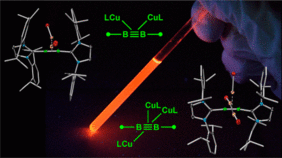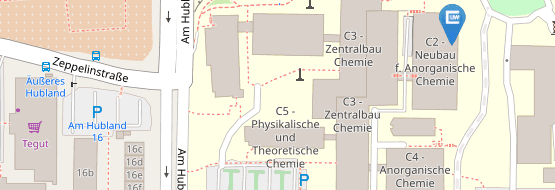Just Published in Journal of the American Chemical Society
03/28/2017Strongly Phosphorescent Transition Metal π-Complexes of Boron–Boron Triple Bonds
Authors: Holger Braunschweig*, Theresa Dellermann, Rian D. Dewhurst, Benjamin Hupp, Thomas Kramer, James D. Mattock, Jan Mies, Ashwini K. Phukan, Andreas Steffen*, Alfredo Vargas
Abstract: Herein are reported the first π-complexes of compounds with boron–boron triple bonds with transition metals, in this case CuI. Three different compounds were isolated that differ in the number of copper atoms bound to the BB unit. Metalation of the B–B triple bonds causes lengthening of the B–B and B–CNHC bonds, as well as large upfield shifts of the 11B NMR signals, suggesting greater orbital interactions between the boron and transition metal atoms than those observed with recently published diboryne/alkali metal cation complexes. In contrast to previously reported fluorescent copper(I) π-complexes of boron–boron double bonds, the Cun-π-diboryne compounds (n = 2, 3) show intense phosphorescence in the red to near-IR region from their triplet excited states, according to their microsecond lifetimes, with quantum yields of up to 58%. While the Cu diborene bond is dominated by electrostatic interactions, giving rise to S1 and T1 states of pure IL(π–π*) nature, DFT studies show that the CuI π-complexes of diborynes reported herein exhibit enhanced metal d orbital contributions to HOMO and HOMO–1, which results in S1 and T1having significant MLCT character, enabling strong spin–orbit coupling for highly efficient intersystem-crossing S1 → Tn and phosphorescence T1 → S0.


![[Translate to Englisch:] [Translate to Englisch:]](/fileadmin/_processed_/d/f/csm_FrontICBC2_1dbc3f66ed.jpg)
![[Translate to Englisch:] [Translate to Englisch:]](/fileadmin/_processed_/4/c/csm_IAC_Back_958d8b320b.png)

